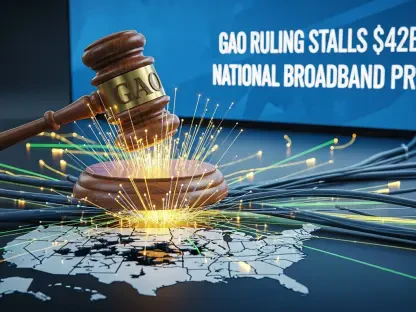Nokia Corporation epitomizes the power of relentless innovation and reinvention, transforming from a humble Finnish paper mill established in the 19th century into a global telecommunications leader. This remarkable history reflects Nokia’s ability to navigate significant technological shifts and economic challenges, adapting its business model to meet evolving global communication demands. As the company continues to thrive in today’s fast-paced tech environment, its journey serves as a vital case study on strategic agility and corporate endurance.
Early Beginnings and Industrial Diversification
Origins in the 19th Century
Founded in 1865 by mining engineer Fredrik Idestam, Nokia emerged as an industrial player, initially supplying paper to the burgeoning Russian Empire. Located on the Nokianvirta River in Finland, the single pulp mill set the stage for Nokia’s initial business operations. Throughout the years, Nokia expanded its industrial footprint, venturing into new domains like rubber products and electrical cables. This diversification was pivotal, establishing a broader foundation that facilitated Nokia’s growth beyond its original confines. By 1967, a merger with Finnish Rubber Works and Finnish Cable Works transformed Nokia into a multi-sector conglomerate.
Transition to Electronics
The late 20th century marked a transformative phase for Nokia. As global interest in telecommunications surged, Nokia strategically shifted towards electronics with an emphasis on radio transmission technology. This foresight enabled the company to position itself prominently within the nascent European mobile communications market of the 1970s. The development and production of network equipment and portable car phones during the 1980s demonstrated Nokia’s commitment to transitioning from traditional industries to high-tech solutions. The debut of the Mobira Cityman in 1987, one of the first handheld mobile phones, symbolized Nokia’s strategic shift to consumer electronics and underscored its ambition to become a technology leader.
Dominance in the Telecommunications Sector
Leadership and Growth in the 1990s
In the 1990s, under the leadership of CEO Jorma Ollila, Nokia experienced unprecedented growth by focusing exclusively on telecommunications, shedding non-core businesses. This strategic realignment aligned with the global rollout of GSM technology, enabling Nokia to become the world’s leading mobile phone manufacturer by 1998. Iconic products such as the Nokia 3210 and 3310 are emblematic of this era, capturing the public’s imagination with their durability and the universally recognizable Nokia ringtone. Nokia’s financial performance mirrored this success, with its shares commanding significant attention on the Helsinki and New York Stock Exchanges, further solidifying its market influence.
Challenges and Strategic Shifts
Despite its dominance, Nokia faced increasing competition as new market entrants, like Apple and Samsung, introduced smartphones that redefined consumer expectations and technology standards. In an effort to reinvent its market presence, Nokia pursued partnerships, most notably with Microsoft. This collaboration aimed to revitalize Nokia’s smartphone line using Windows Phone technology. However, with the rise of iPhone and Android platforms in the early 2000s, Nokia found itself navigating formidable challenges. Ultimately, this led to the sale of its mobile devices unit to Microsoft in 2014, reflecting a pivotal shift in Nokia’s strategic focus.
Advancements and Sustaining Relevance
Reimagining Its Role with 4G and 5G
Nokia’s decision to concentrate on telecommunications infrastructure proved integral to maintaining its relevance in the global market. By focusing on 4G and 5G technologies, Nokia positioned itself competitively alongside industry heavyweights Ericsson and Huawei. Major acquisitions, including that of Alcatel-Lucent, reinforced its infrastructure capabilities, facilitating Nokia’s prominence as an essential provider of network equipment. This strategic pivot enabled Nokia to remain at the forefront of telecommunications, even as it transitioned away from its previous dominance in consumer mobile devices.
Leading Next-Generation Connectivity
Entering the 2020s, Nokia has firmly established itself as a key player in next-generation telecommunications solutions. The company’s leadership in evolving technologies, such as 5G networks, the Internet of Things (IoT), and cloud services, underscores its commitment to driving advanced global connectivity. These initiatives have not only stabilized Nokia’s stock performance, re-engaging investor confidence, but have also strengthened its partnerships with carriers, enterprises, and governments worldwide, ensuring steady demand for its cutting-edge network solutions.
Lessons from Nokia’s Transformation
Nokia Corporation stands as a testament to the power of continuous innovation and the capacity to reinvent itself. Originating as a modest Finnish paper mill in the 19th century, Nokia has evolved into a global leader in telecommunications. This extraordinary transformation showcases Nokia’s remarkable capability to navigate major technological advancements and economic hurdles. Through the years, Nokia has consistently adapted its business model to address the changing demands of global communication, reflecting strategic foresight and resilience. As the company thrives in today’s dynamic tech landscape, its journey illustrates how a firm can remain relevant and robust amidst relentless change. Nokia’s history serves as a compelling case study in strategic agility and enduring corporate strength. By continuously evolving and embracing new technologies, Nokia has maintained its position in the competitive world of telecommunications, demonstrating the importance of adaptability and foresight in sustaining success over more than a century.









